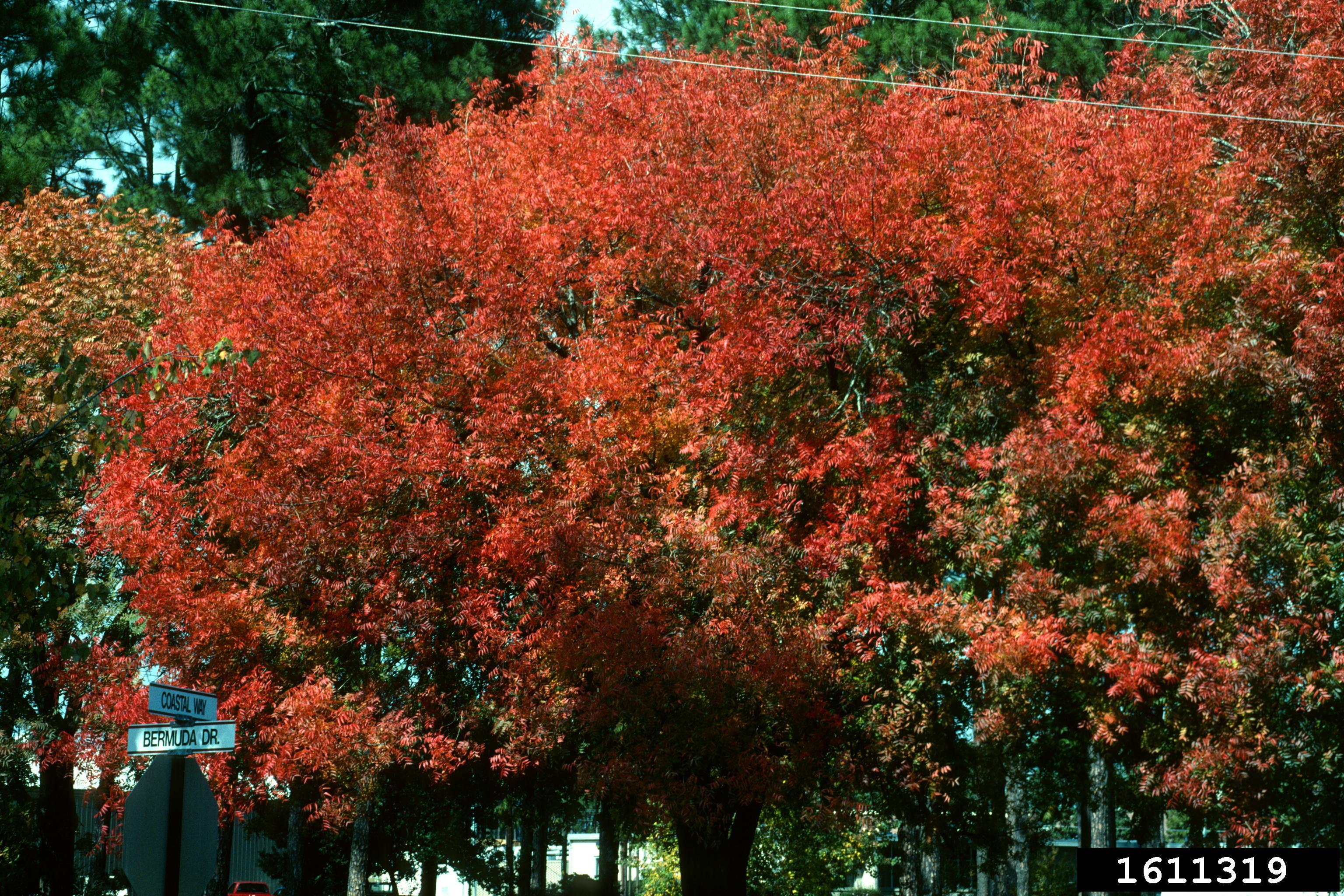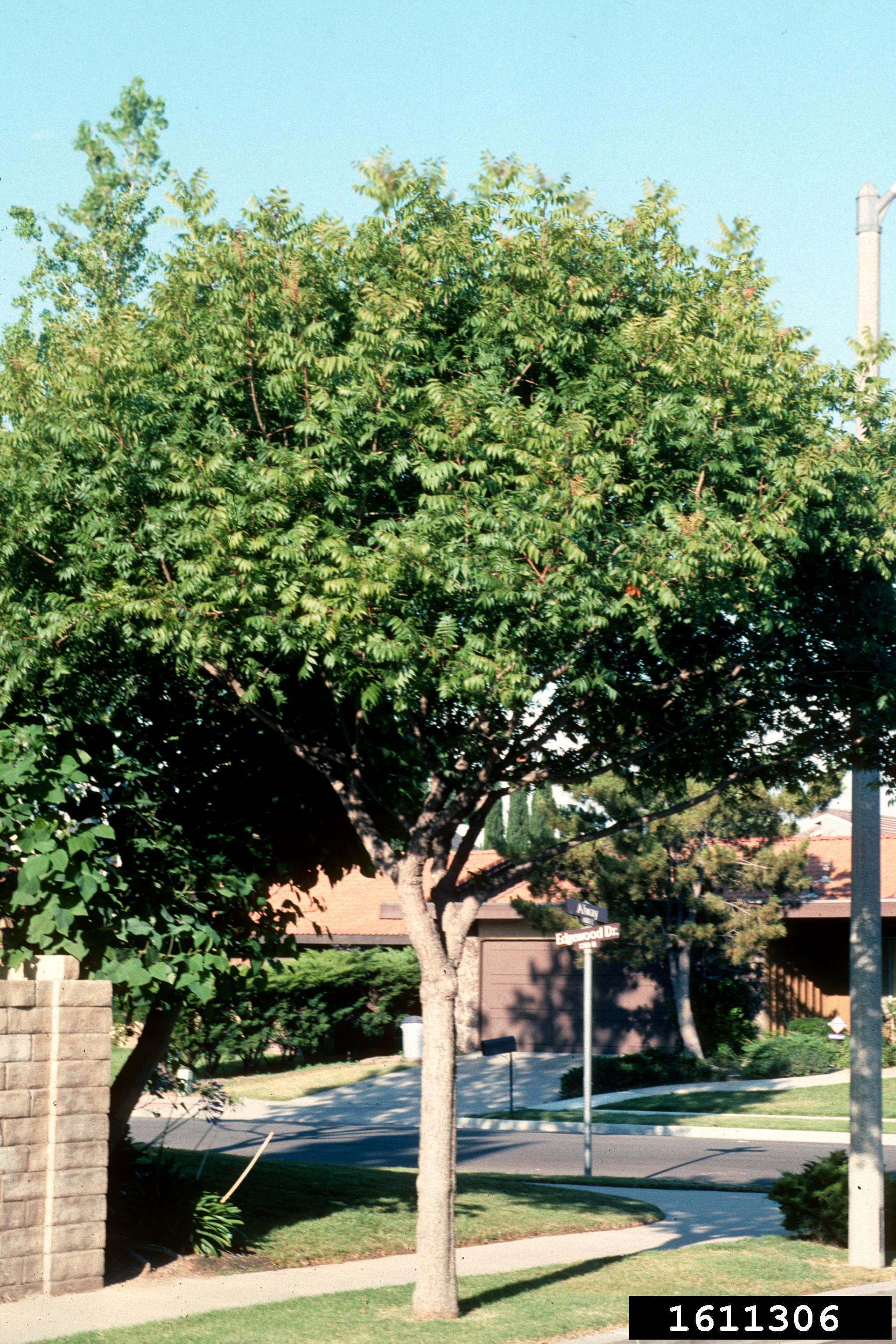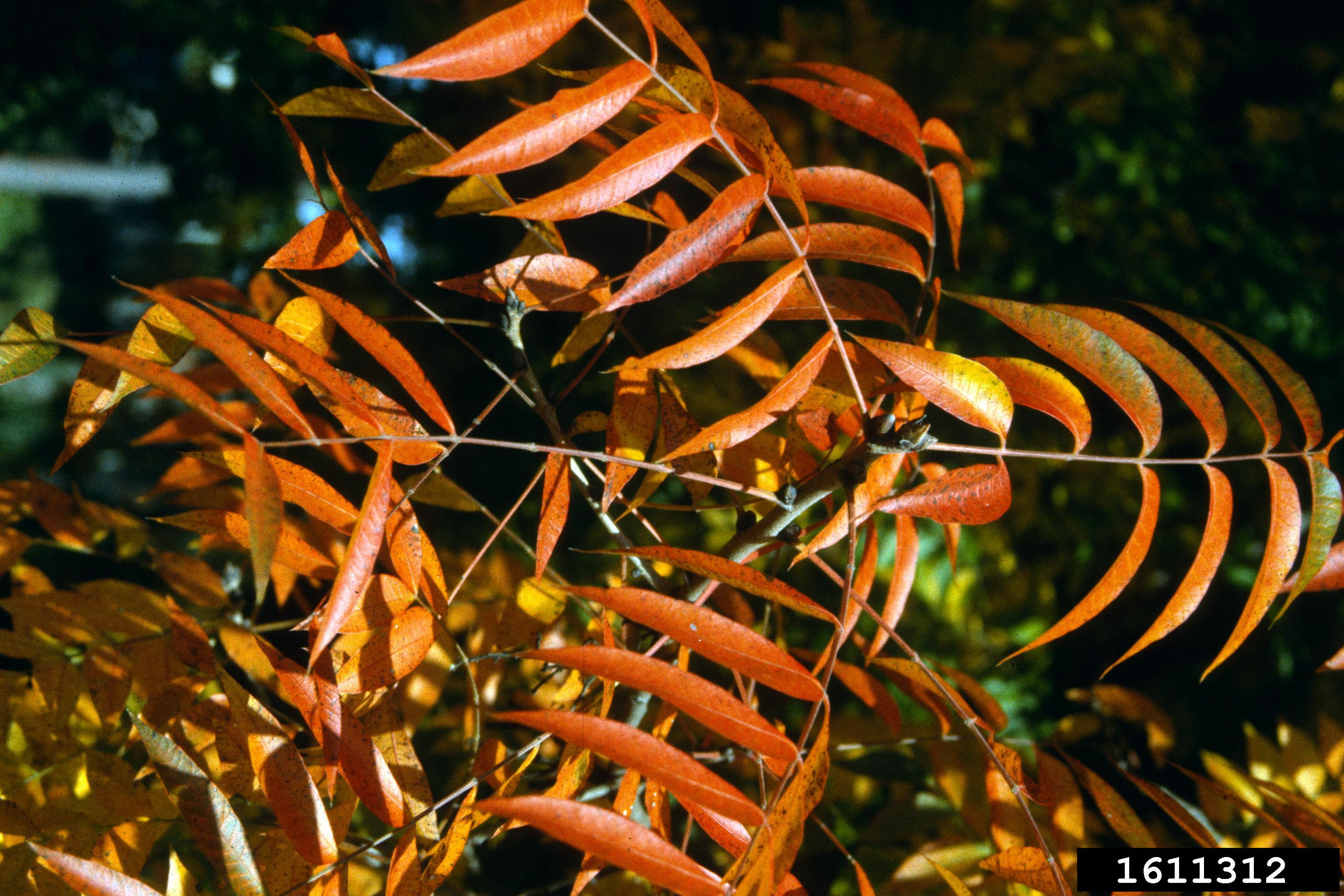 Consider Chinese Pistache Trees - September 16, 2020 Jeff Schalau, Agent, Agriculture & Natural Resources University of Arizona Cooperative Extension, Yavapai County What is the perfect tree for the home landscape? Most people want an attractive, low maintenance tree that grows fast, is pest and disease free, conserves water, and lives a long time. Iím sorry to say that no such tree exists. The problem: most fast-growing trees are shorter-lived, use lots of water, and, if they survive, quickly outgrow the space available in the average residential landscape. In addition, these fast-growing trees are often more susceptible to insects and diseases. Given this complex balancing act, the Chinese pistache (Pistacia chinensis) meets most of the above listed criteria and is an excellent tree for most areas of Yavapai County. The Chinese pistache is a medium to large deciduous hardwood tree that will fit into larger home landscapes. It is suitable for USDA Plant Hardiness Zones 6-9 and at maturity, reaches a height of 30-35 ft and width of 20-30 ft. I have recommended this tree to many people over the years and those I see are doing very well. The leaves are compound pinnate (a long leaf stem with 11 to 17 leaflets) and alternately arranged on the stems and branches. It has impressive fall color (scarlet, crimson, orange, sometimes yellow), even in milder climates. This tree is also resistant to insects and many plant diseases. The Chinese pistache is dioecious. This means each tree is either a male that produces pollen (with little or no allergenic qualities) or female producing attractive (but inedible) berries that are attractive to birds. Once established, it is very drought, wind, and heat tolerant. The Chinese pistache is a close relative of the pistachio nut tree (Pistacia vera), but is much more cold hardy. The wood is also very hard and rot resistant. Young Chinese pistache trees should be planted in spring or fall. They must have full sun and do best in well-drained soil. However, they tolerate a wide range of soils, some alkalinity, and can live a very long time (several centuries). If there is a downside to the Chinese pistache, itís that young trees appear spindly and awkward. Trees planted from #5 and #15 containers will probably require staking and grow slowly for the first three years after planting. Some structural pruning may also be necessary in the early years to develop an even canopy and proper branch spacing. Once established, they can grow up to two feet in height and width per year. All trees should be planted in a hole three to five times the width and only as deep as the root ball. Spring or fall planting is recommended. No amendments should be incorporated into the soil. The soil surface should be mulched to a depth of two to three inches and mulch should not touch the trunk. The soil should be allowed to dry on the surface between irrigations and never be soggy. Waterlogged soils are not suitable for Chinese pistache trees. As mentioned earlier, staking will probably be necessary on a newly planted Chinese pistache tree. The most common staking method uses two wooden stakes drive into the ground on opposite sides of the tree. Tie the tree to the stakes with soft tree ties rather than wire or other rigid materials. If using wire to tie the tree to the stakes, use soft rubber garden hose to protect the tree from damage from the wire. Allow the tree to have some movement as this will allow the trunk to become stronger. On any staked tree, you should closely observe the area where the tie material is in direct contact with the tree. Damage from tree staking is very common and can weaken the tree for life if allowed to damage the bark. After planting any tree, mulch should be applied to the soil surface around the tree taking care not to pile it against the trunk. This will help retain soil moisture and suppress annual weed growth. I prefer locally produced wood chips available from local transfer stations or utility providers, but bagged mulch materials can also be used. Visit the online edition for photos and additional information about the Chinese pistache and general guidelines for planting and staking of containerized trees are included below. You can follow the Backyard Gardener on Twitter Ė use the link on the BYG website. If you have other gardening questions, email the Master Gardener Help Desk in Prescott (prescottmg@gmail.com) or Camp Verde (verdevalleymg@gmail.com) and be sure to include your name, location, and phone number. Find past Backyard Gardener columns or provide feedback at the Backyard Gardener web site: https://cals.arizona.edu/yavapai/anr/hort/byg/. Images  Chinese pistache tree (Pistacia chinensis) displaying fall color (Photo by John Ruter, University of Georgia, Bugwood.org).
Chinese pistache tree (Pistacia chinensis) displaying fall color (Photo by John Ruter, University of Georgia, Bugwood.org). A younger Chinese pistache tree (Pistacia chinensis) during the growing season withour fall color (Photo by John Ruter, University of Georgia, Bugwood.org).
A younger Chinese pistache tree (Pistacia chinensis) during the growing season withour fall color (Photo by John Ruter, University of Georgia, Bugwood.org). Chinese pistache tree (Pistacia chinensis) showing leaves in fall color (Photo by John Ruter, University of Georgia, Bugwood.org).
Chinese pistache tree (Pistacia chinensis) showing leaves in fall color (Photo by John Ruter, University of Georgia, Bugwood.org).Additional Resources Chinese Pistache: Shade Tree Superstar For Texas, Denton County Master Gardener Association dcmga.com/north-texas-gardening/perennials/master-gardener-favorites/chinese-pistache-tree/ Chinese Pistache, Clemson Cooperative Extension hgic.clemson.edu/chinese-pistache/ Pistachia chinensis, Missouri Botanical Garden www.missouribotanicalgarden.org/PlantFinder/PlantFinderDetails.aspx?kempercode=b641 Planting Guidelines: Container Trees and Shrubs, University of Arizona Cooperative Extension extension.arizona.edu/sites/extension.arizona.edu/files/pubs/az1022.pdf |